For over a century and a half, a towering organism from Earth’s ancient past has baffled scientists, defying easy categorization and continually sparking intense debate. Known as Prototaxites, this colossal fossil, once a dominant feature of barren primordial landscapes, represents a profound mystery—a life form that grew to immense proportions between 440 and 360 million years ago, yet its true biological identity has remained elusive, consistently challenging our understanding of early terrestrial ecosystems.
From its first unearthing, Prototaxites embarked on a scientific odyssey, initially mistaken for ancient trees before being reinterpreted as giant fungi, and now, through cutting-edge research, is being reconsidered as something entirely different. This journey of reclassification underscores the dynamic nature of scientific inquiry and the persistent human drive to organize and comprehend the bewildering diversity of life, both past and present. The story of Prototaxites is a testament to evolution’s ceaseless experimentation, an unfolding narrative that forces us to question the very boundaries of our known biological kingdoms.
Recent groundbreaking findings suggest that this enigmatic 26-foot-tall fossil might not belong to any known branch of life—neither plant, animal, nor fungus. This revolutionary perspective promises to rewrite chapters of evolutionary history, positing Prototaxites as a member of an entirely novel, extinct lineage of eukaryotes. Let us embark on a comprehensive exploration of this magnificent and perplexing organism, examining the evidence that has led to such a profound re-evaluation.
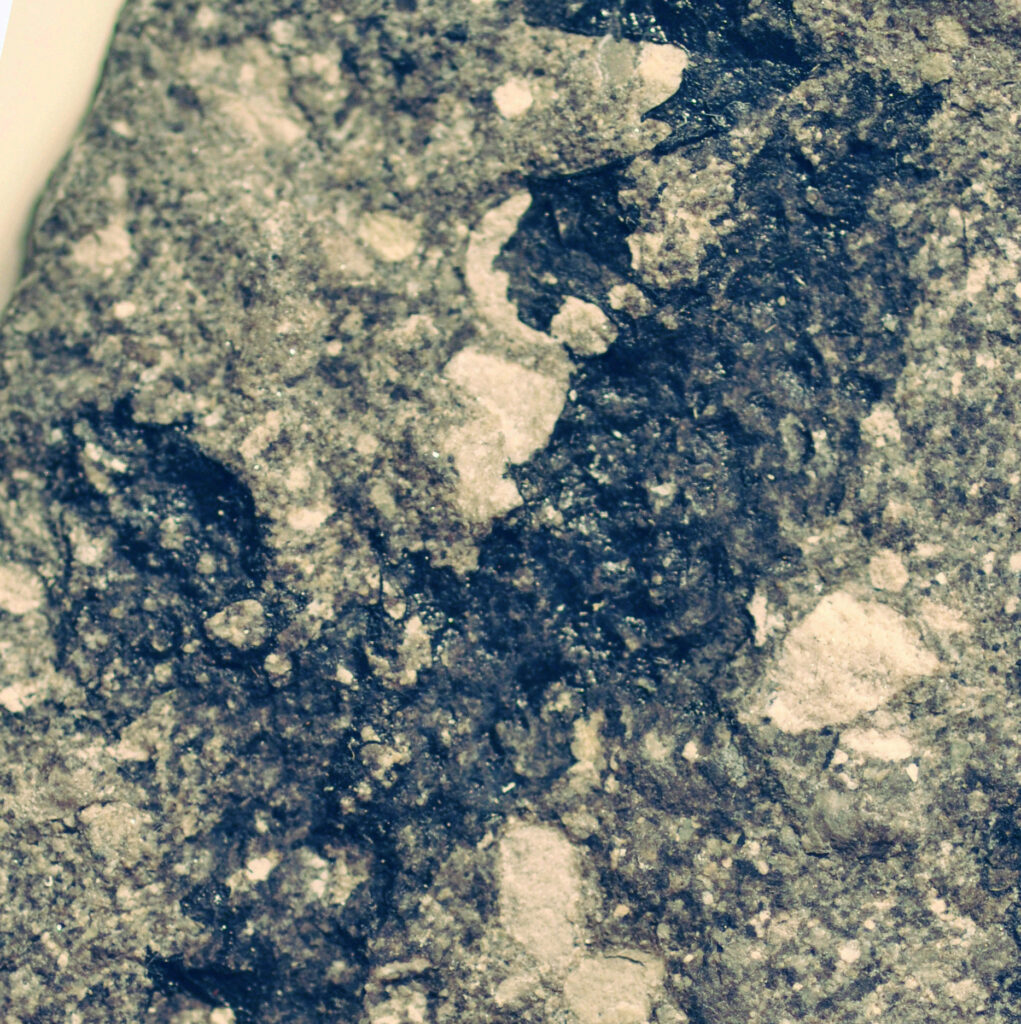
1. The Initial Discovery and Early Confusion (1843)
The story of Prototaxites commences in 1843, a pivotal year when paleontologists first stumbled upon giant, cylindrical fossils along the ancient riverbanks of Gaspé Bay in Quebec, Canada. These monumental remnants immediately presented a puzzle, hinting at a terrestrial giant from a time when complex land life was just beginning to emerge.
Early interpretations of these unprecedented findings were naturally influenced by the prevailing botanical knowledge of the era. Geologist John William Dawson, a prominent figure in 19th-century paleontology, initially identified these massive trunks as decayed conifer remnants in the 1850s, leading to his naming it ‘first conifer.’ This designation, however, quickly met with skepticism as detailed examinations failed to reveal the typical anatomical features characteristic of conifers, thereby casting the initial seeds of doubt upon its classification.
This initial misidentification, though understandable given the limited understanding of ancient life forms at the time, set the stage for nearly two centuries of scientific bewilderment. The sheer scale and peculiar internal structure of these fossils demanded a re-evaluation, signaling that Prototaxites was no ordinary plant and thus igniting a persistent debate that would fuel paleontological research for generations to come.
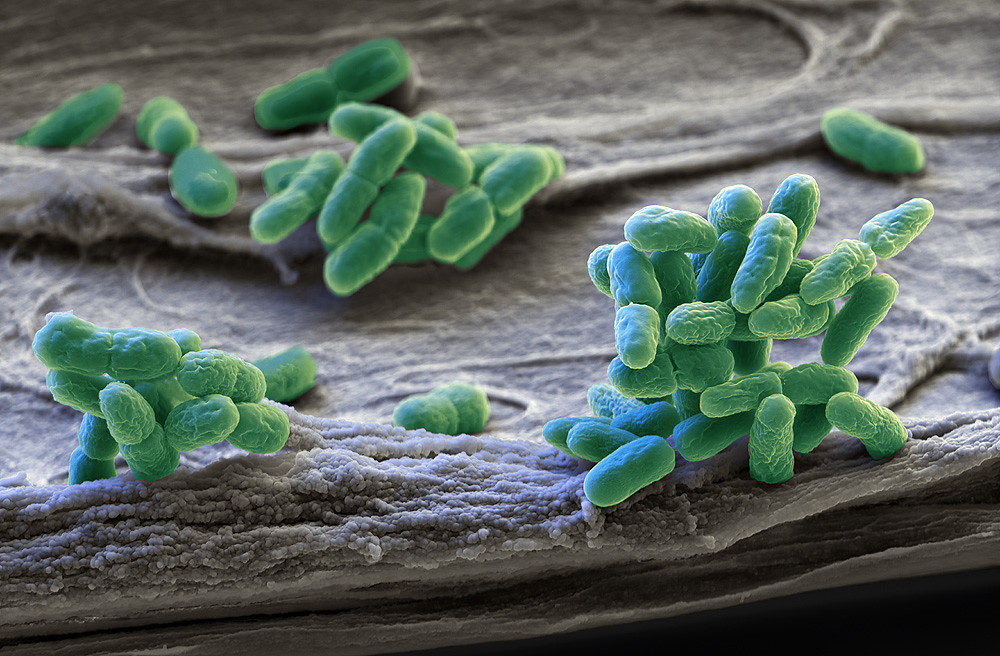
2. Early Hypotheses: From Conifers to Algae
As the initial conifer hypothesis faced scrutiny due to the absence of key anatomical markers, scientists began to explore other possibilities for the mysterious Prototaxites. The towering, branchless trunks simply did not align with the known characteristics of ancient trees, pushing researchers to consider more unconventional interpretations. The scientific community grappled with the question of where this colossal organism might fit within the nascent understanding of terrestrial life.
One significant alternative theory that emerged proposed that Prototaxites might represent peculiar forms of giant algae. This idea gained some traction as it accounted for the seemingly simple, cylindrical form and the aquatic or semi-aquatic environments where some fossils were found. However, like the conifer theory, the algal hypothesis also struggled to fully explain the complex internal architecture revealed by subsequent microscopic studies, leaving a significant gap in its explanatory power.
Throughout the late 19th and early 20th centuries, the struggle to classify Prototaxites persisted, illustrating the limitations of paleontological techniques of the time. The unique anatomy and sheer scale of these fossils continually steered scientists away from easy answers, forcing them to confront the possibility of a lost chapter in the history of life, one that defied the conventional taxonomic frameworks then in place.
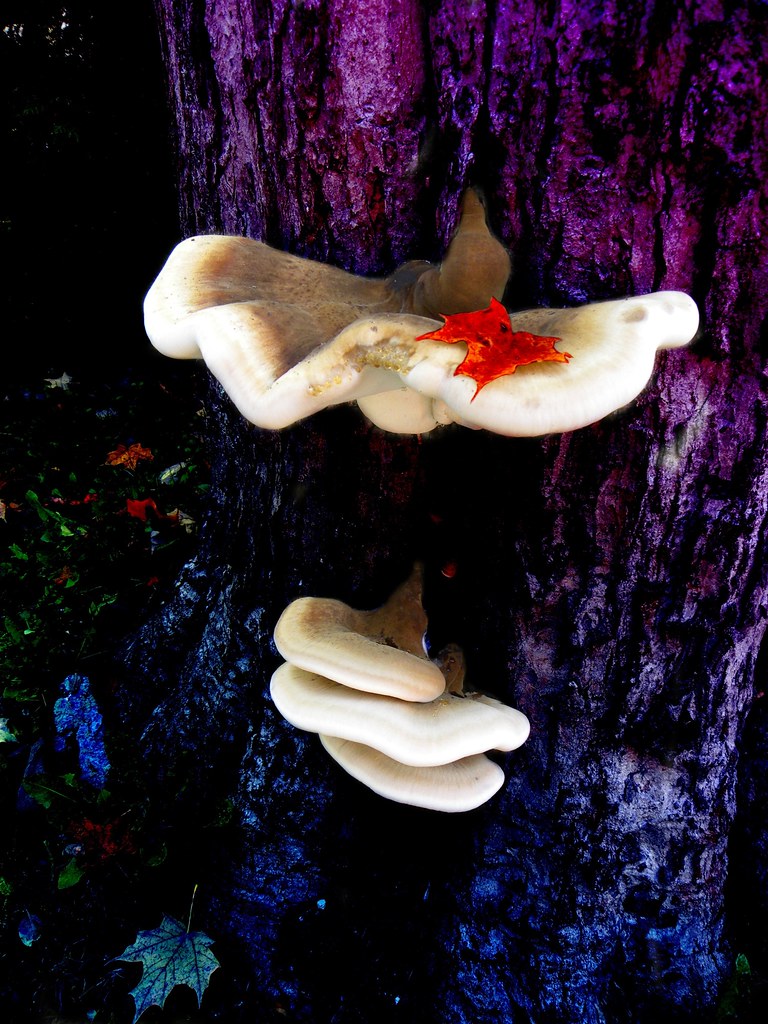
3.The Emergence of the Fungal Theory
The early 20th century marked a significant turning point in the classification of Prototaxites, as scientific focus gradually shifted towards a fungal interpretation. This pivotal change was driven by more detailed microscopic examinations that revealed an internal structure unlike that of plants or algae, but strikingly similar to certain aspects of fungi.
Initial microscopic observations by researchers like Arthur Church in 1919 provided crucial insights into the internal organization of Prototaxites. These early works, coupled with subsequent groundbreaking research by National Museum of Natural History paleontologist Francis Hueber in 2001, progressively solidified the notion that these fossils were in fact the fruiting bodies of an enormous fungal organism. Hueber’s confirmation in 2001 stated that Prototaxites was “indeed most likely an enormous fungus,” a conclusion that resonated widely within the scientific community.
The key to this reclassification lay in the complex internal architecture observed: an interwoven network of narrow tubes with diameters as small as 50 micrometers. This intricate network, featuring a variety of tube types—some thick and unbranched, others thin with intricate, branching patterns—suggested an alternative origin, one more aligned with the mycelial structures found in certain fungal species. For much of the 20th century, this became the prevailing view, shaping how scientists understood Prototaxites and its role in Earth’s early ecosystems.
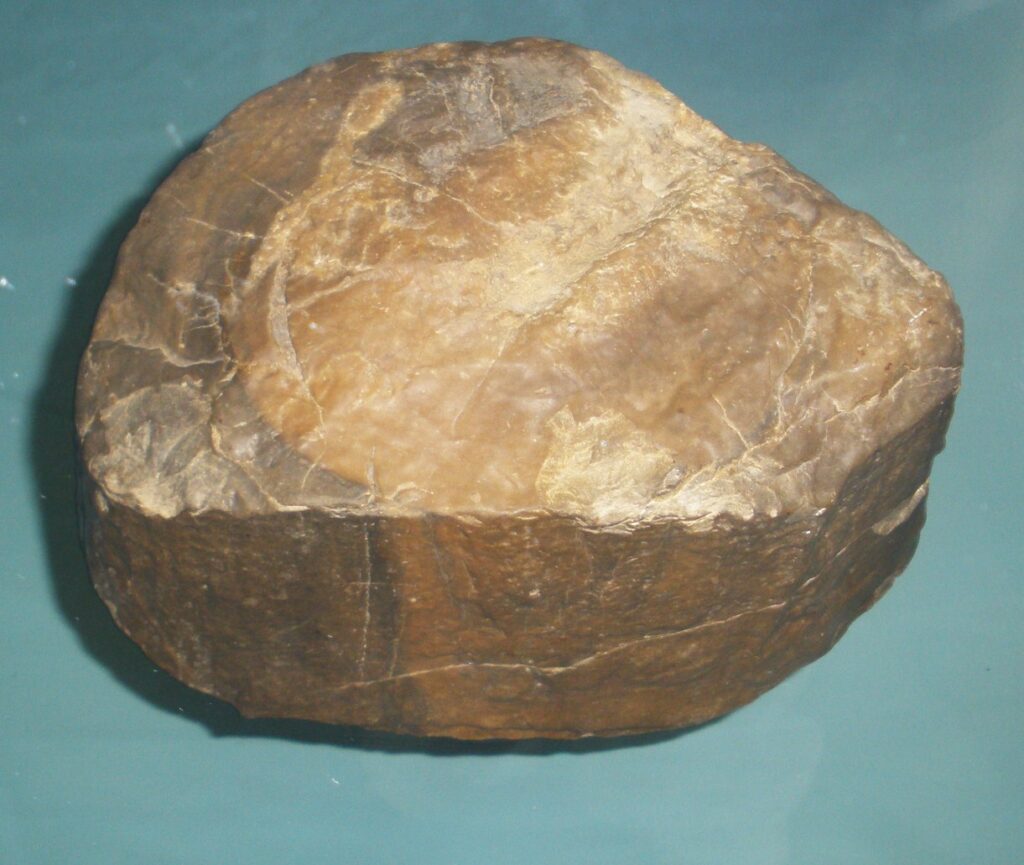
4. The Towering Presence: Prototaxites’ Physical Characteristics and Ecological Role
Beyond its mysterious classification, one of the most striking features of Prototaxites was its truly monumental physical scale. This ancient organism was a genuine giant, towering over the landscapes of early terrestrial Earth during the Silurian and Devonian periods, approximately 440 to 360 million years ago. It could reach extraordinary heights of up to 26 feet (8 meters) and stretch a meter (3 feet) wide, making it an imposing presence in the prehistoric world.
These immense, branchless trunks dwarfed most other flora of their time, such as the primitive land plant Cooksonia, which, while significant, was comparatively diminutive. The sheer size of Prototaxites indicates that it likely played a critical ecological role in early terrestrial ecosystems, dominating the landscape as one of the “first giant organisms to thrive on dry land.” Its upright, massive structures would have significantly influenced the distribution of moisture, nutrients, and sunlight in its environment.
Imagine the swamps of the late Silurian period, where a mix of horsetails, ferns, and other prototype plants formed alien-looking vegetation. Amidst this nascent greenery, the 8-meter tall towers of Prototaxites would have stretched towards the sky, creating a landscape utterly unlike anything we observe today. Its ecological dominance suggests a foundational role in shaping the evolution of early land-based life, leaving scientists to ponder the full extent of its influence.
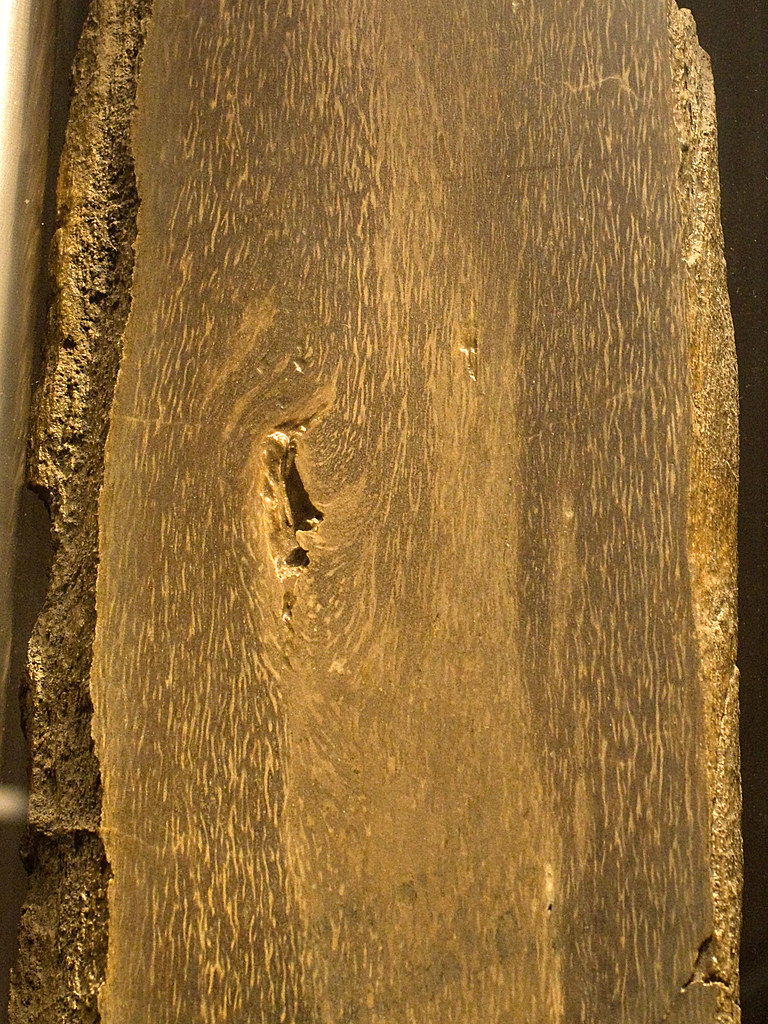
5. Heterotrophic Nature: Evidence from Carbon Isotopes
Further reinforcing the fungal hypothesis, especially during the early 21st century, was compelling evidence concerning Prototaxites’ nutritional strategy. Unlike plants, which are autotrophic and produce their own food through photosynthesis, Prototaxites displayed characteristics of a heterotrophic organism—meaning it derived its carbon and energy from organic compounds obtained from other sources.
In 2007, a significant chemical analysis conducted by teams including C. Kevin Boyce from Stanford University provided strong support for this idea. Their work focused on the carbon isotopic ratios found within Prototaxites’ tissues. The variable carbon isotopic ratios were characteristic of organisms that did not rely on photosynthesis, but instead derived carbon from a mix of substrates, a hallmark trait of heterotrophic life forms.
This evidence was crucial in cementing the fungal classification for many scientists at the time. It appeared to confirm that Prototaxites behaved like fungi by leeching off other living organisms or decaying organic matter for its sustenance. This insight into its physiological processes provided a powerful argument, pushing the scientific consensus firmly towards an enormous fungal identity and seemingly settling a long-standing debate for a period.

6. Mounting Challenges to the Fungal Classification
Despite the widespread acceptance of the fungal hypothesis, particularly after the carbon isotope analyses, the classification of Prototaxites was “never without controversy.” Over the years, new discoveries and re-examinations began to complicate the picture, leading to renewed debates and questions that traditional fungal taxonomy struggled to answer. The scientific narrative, far from settled, continued to evolve.
Crucially, Prototaxites was found to lack key biochemical markers present in all known fungi, most notably, traces of chitin in their cell walls. Chitin is a robust, fibrous substance that forms the cell walls of fungi, as well as the exoskeletons of insects and shells of crustaceans. Its absence in Prototaxites presented a significant challenge to the prevailing fungal view, suggesting a fundamental difference in its biological makeup.
While some researchers attempted to reconcile these differences by suggesting that Prototaxites might be a giant lichen—a symbiotic association between fungi and photosynthetic partners—other studies pointed to an “entirely distinct molecular fingerprint.” Repeated reclassifications and growing scientific doubts demonstrated that traditional fungal frameworks could not fully accommodate the unique features of Prototaxites, hinting at a lost lineage that defied modern biological categories altogether.
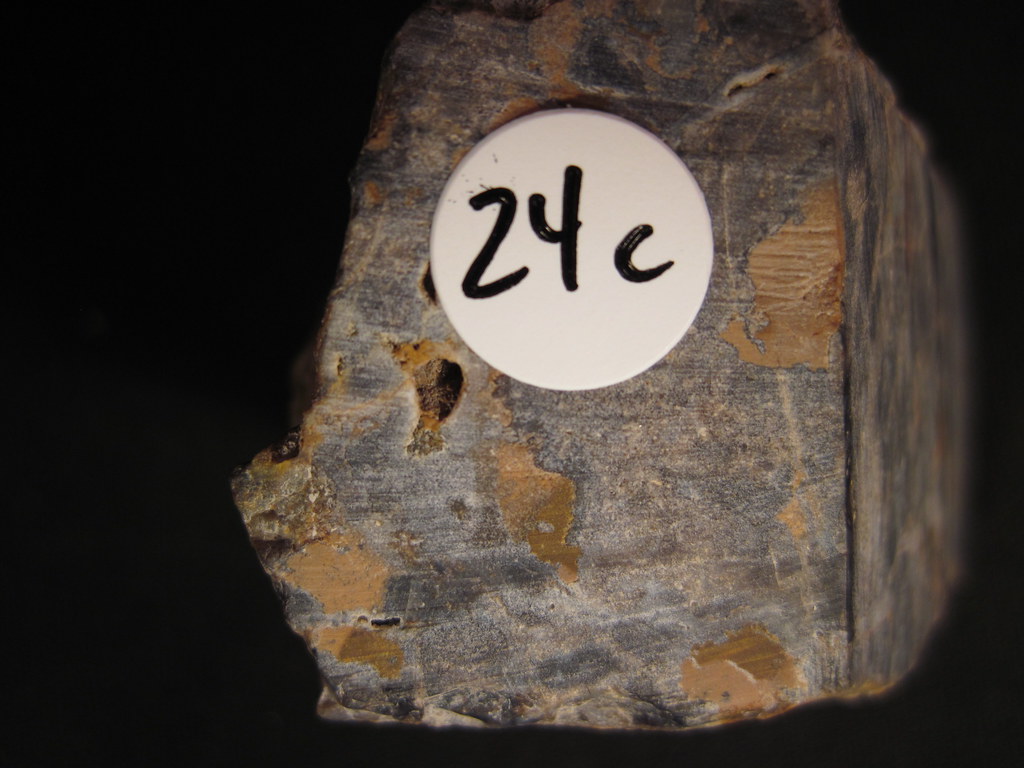
7. The Significance of Rhynie Chert Specimens (Prototaxites taiti)
The most recent breakthrough in our understanding of Prototaxites hinges on a particular set of exquisitely preserved specimens from a renowned geological site: the Rhynie chert. Located in Aberdeenshire, Scotland, the Rhynie chert is a sedimentary deposit famed for its exceptional fossil quality from the early Devonian period, offering a rare window into a 407-million-year-old ecosystem.
These remarkable deposits yielded specimens of a smaller species, designated as Prototaxites taiti. While not as colossal as the 26-foot giants found elsewhere, the preservation quality of P. taiti from the Rhynie chert proved invaluable. Its pristine condition allowed for unprecedented detailed analysis, revealing intricate anatomical and chemical nuances that had previously eluded scientists studying less-preserved fossils.
These specific fossils became central to a critical re-examination by a team from the University of Edinburgh. By focusing on P. taiti, researchers were able to apply advanced analytical techniques, setting the stage for findings that would fundamentally challenge the long-held fungal hypothesis and lead to a revolutionary new conclusion about this enigmatic ancient giant. The Rhynie chert specimens thus represent a cornerstone in unraveling the true identity of Prototaxites.
The scientific journey to understand Prototaxites, far from concluding with the fungal hypothesis, has recently entered an exciting new phase, propelled by the unparalleled preservation of specimens from the Rhynie chert. These deposits, offering a pristine snapshot of a 407-million-year-old ecosystem, have enabled a level of scrutiny previously impossible, revealing details that compel a radical re-evaluation of this ancient giant’s place in the tree of life. This latest chapter in the Prototaxites saga is a testament to persistent scientific inquiry and the power of advanced technology to unravel Earth’s deepest biological mysteries.
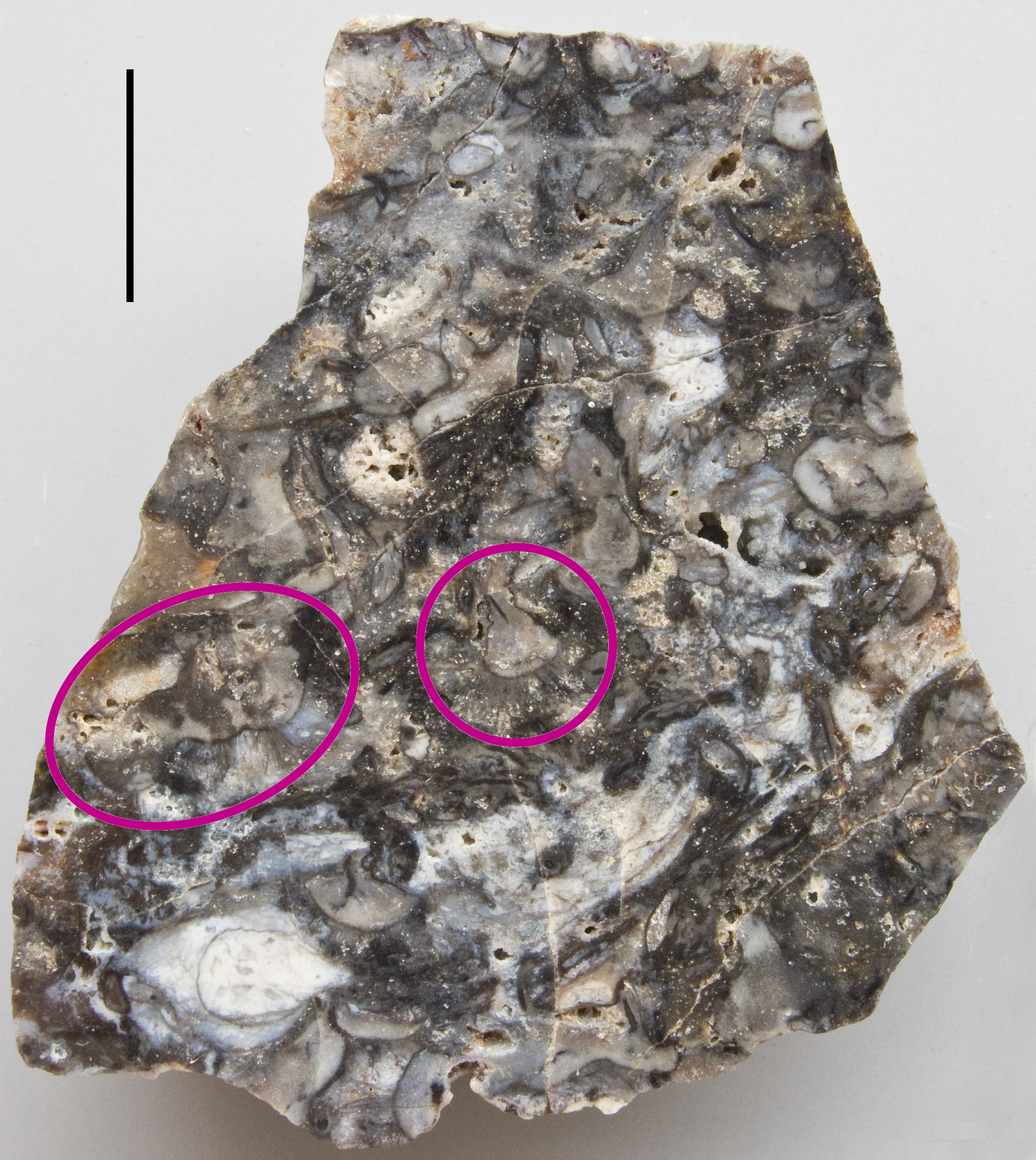
8. Advanced Analytical Techniques Unlocking Ancient Secrets
The ability to peer into the past with unprecedented clarity has been revolutionized by the application of advanced analytical techniques to the Prototaxites taiti specimens from the Rhynie chert. Researchers at the University of Edinburgh employed a sophisticated suite of methods, each contributing a crucial piece to the puzzle. These included confocal laser scanning microscopy, which allows for high-resolution 3D imaging of microscopic structures, providing intricate details of the fossilized organism’s internal architecture without damaging the delicate remains.
Complementing the imaging, Fourier-transform infrared spectroscopy (FTIR) was utilized to analyze the chemical composition of the fossils. This technique identifies molecular fingerprints by measuring how infrared light is absorbed by the material, revealing the presence or absence of specific organic compounds. Such detailed chemical profiling allowed scientists to compare the molecular makeup of Prototaxites with that of known life forms, offering insights into its biochemical identity that simple visual inspection could not.
Furthermore, the team incorporated machine learning algorithms, trained to recognize the molecular fingerprints of known organisms, into their analysis. This cutting-edge approach provided an objective and powerful tool for classification, sifting through vast amounts of data to identify patterns and anomalies that might escape human observation. The synergy of these advanced technologies allowed for a comprehensive and unbiased re-examination, setting the stage for truly groundbreaking conclusions about Prototaxites taiti.
Read more about: Patrick McGovern, Archaeologist Who Unlocked the Secrets of Ancient Alcohol, Dies at 80
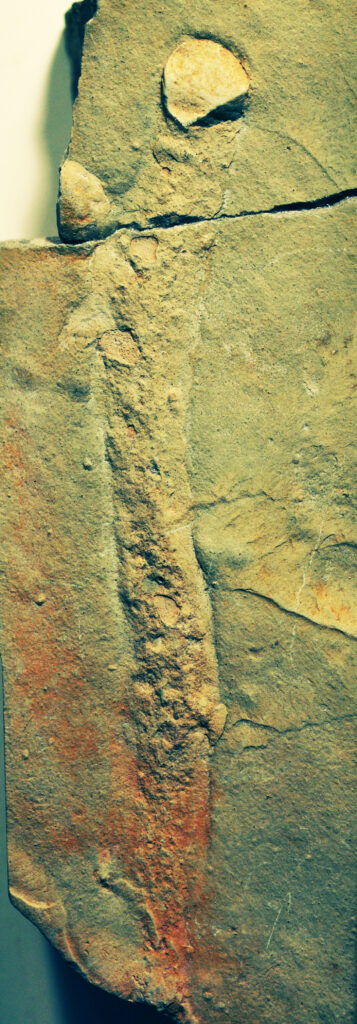
9. Revealing Unique Anatomical Signatures
The meticulous re-examination of Prototaxites taiti specimens through these advanced imaging techniques brought forth a series of unique anatomical findings that diverged significantly from previous assumptions, particularly the fungal hypothesis. Rather than conforming to known fungal structures, the internal organization of Prototaxites presented a distinct morphology that challenged its traditional placement. The organism was characterized by a complex arrangement of internal tube structures, subtly different from anything observed in modern fungi.
One striking observation was the presence of subtle annular thickenings within these internal tubes. These rings, not characteristic of fungal hyphae, pointed towards a more complex structural organization. Furthermore, the analysis identified ‘medullary spots’ — irregular blobs of cells located internally—which are not found in any extant fungi. These intricate details highlighted a biological blueprint that simply did not align with the reproductive or structural elements known in modern fungal species.
Previously, tubes on the side of some specimens had been interpreted as sacs filled with spores, a key argument for its placement within the extinct fungal group Ascomycota. However, Loron’s team meticulously found that this supposedly fertile part had no organic connection to the rest of the organism. This critical re-evaluation of its internal and external structures systematically dismantled the anatomical basis for its fungal classification, compelling researchers to look beyond conventional biological categories.
Read more about: Asia’s Ancient Secrets: Unearthing the World’s Oldest Mummies and a Lost Chapter of Human History

10. Chemical Composition: A Molecular Fingerprint of Uniqueness
Perhaps the most compelling evidence for Prototaxites’ truly enigmatic nature emerged from its detailed chemical analysis, which revealed a molecular fingerprint unlike that of any known organism. A key finding was the complete absence of chitin in its cell walls. Chitin, a robust polysaccharide, is a defining characteristic of all known fungi, forming the structural basis of their cell walls, much like cellulose in plants or collagen in animals. Its unequivocal absence in Prototaxites taiti thus presented a formidable challenge to the long-held fungal hypothesis.
In stark contrast to the lack of chitin, the chemical analysis revealed the presence of unusual lignin-like compounds within Prototaxites’ tissues. Lignin is a complex polymer that provides rigidity and structural support in the cell walls of vascular plants, enabling them to grow tall and resist gravity. The detection of these compounds in an organism previously thought to be a fungus, combined with the absence of fungal markers, further complicated its classification and underscored its unique biochemistry.
This distinct chemical profile, with its specific blend of ‘lignin-like’ compounds and the absence of fundamental fungal components, demonstrated that Prototaxites was physiologically disparate from both fungi and plants as we understand them. As Corentin Loron and his colleagues highlighted, these chemical findings, along with anatomical evidence, provided a powerful argument against comfortably placing Prototaxites within any existing branch of the eukaryotic tree.
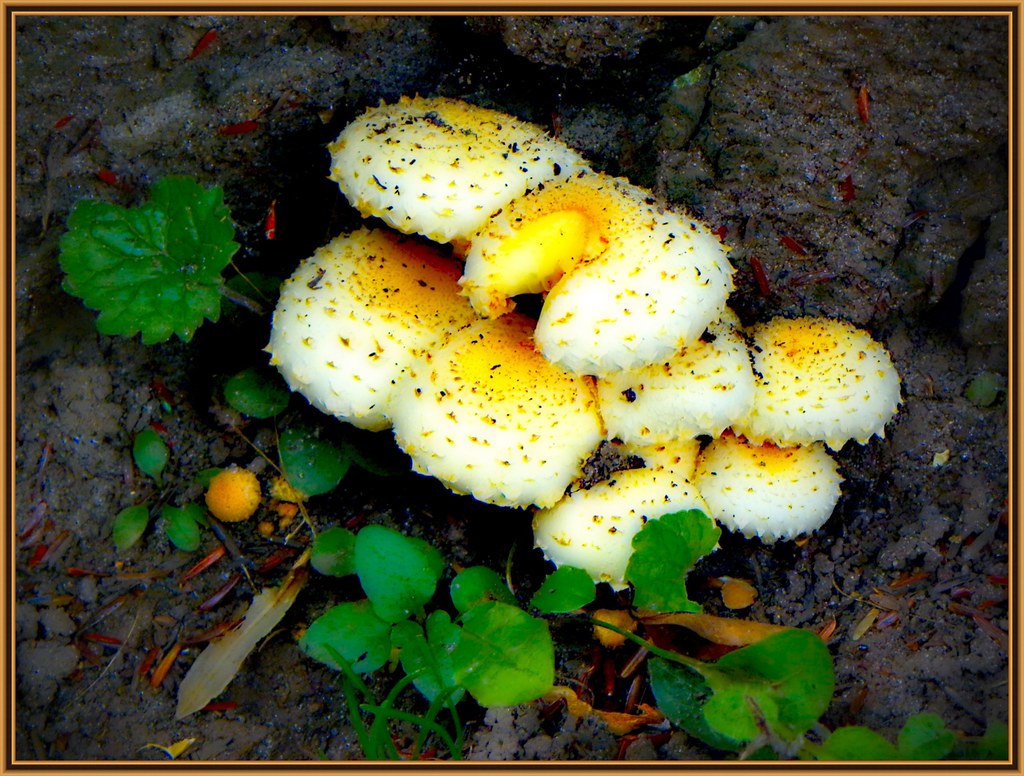
11. Systematic Elimination of Known Life Forms: A Process of Exclusion
Faced with a unique anatomical and chemical signature, the research team undertook a systematic process of elimination, carefully reviewing and rejecting each potential placement of Prototaxites within known biological kingdoms. This rigorous scientific approach, moving beyond mere comparison, sought to identify any extant group that might exhibit all the defining features of this ancient giant. The results were consistently negative across the board.
Fungi were ruled out primarily due to the conspicuous absence of chitin in its cell walls and the distinct internal tube structures that did not align with fungal mycelia. While some earlier analyses had focused on carbon isotopes suggesting a heterotrophic nature, similar to fungi, the absence of this fundamental biochemical marker proved decisive. Furthermore, the anatomy did not connect in the unique ways seen in fungal structures.
Plants and algae were also systematically dismissed. Despite the presence of lignin-like compounds, its overall chemical composition, including the variable carbon isotopic ratios indicative of heterotrophy, made a photosynthetic plant or algal identity “very unlikely.” The peculiar anatomy also failed to match any known plant or algal structures. The possibility of a lichen, a symbiotic association of fungi and algae, was considered but rejected because “its anatomy indicates otherwise,” failing to satisfy the unique structural demands of Prototaxites. Even the remote possibility of it being “some bizarre animal” was dismissed, with researchers stating, “Cell walls say no chance,” as its cellular structure bore no resemblance to animal tissues.
As the researchers themselves concluded, “No extant group was found to exhibit all the defining features of Prototaxites,” reinforcing its profound uniqueness. This exhaustive process of elimination underscored the organism’s singular biological identity, leaving no modern organism with which it might share a clear ancestral relationship, paving the way for a truly revolutionary classification.
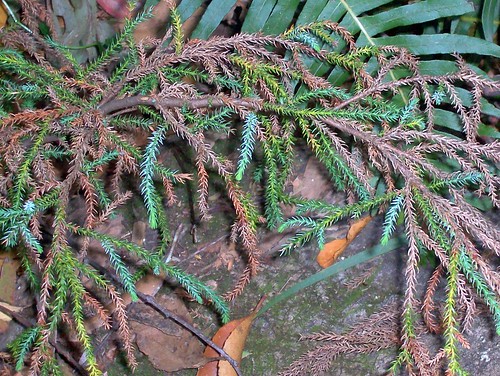
12. The Groundbreaking Conclusion: A Novel, Extinct Eukaryotic Lineage
After a thorough anatomical and chemical investigation, the University of Edinburgh team arrived at a groundbreaking conclusion that fundamentally rewrites our understanding of ancient life. They asserted that Prototaxites taiti could not be comfortably placed within any existing branch of the eukaryotic tree—neither fungi, plants, nor animals. Instead, their findings led them to suggest that Prototaxites represents an entirely novel, extinct form of multicellular life.
The study unequivocally stated: “We conclude that the morphology and molecular fingerprint of P. taiti is clearly distinct from that of the fungi and other organisms preserved alongside it in the [Devonian deposit], and we suggest that it is best considered a member of a previously undescribed, entirely extinct group of eukaryotes.” This statement implies the existence of a ‘lost lineage’ – a major branch of life that once thrived but subsequently vanished without a trace, leaving only these perplexing fossilized remnants.
This revolutionary perspective means that Prototaxites was not merely an unusual variant of a known life form, but rather a unique “experiment in complex multicellularity.” It evolved complex structures and adopted a distinct heterotrophic lifestyle, setting it apart from any modern organism. This conclusion challenges the very framework of our current biological classification, hinting at a forgotten kingdom of life that once played a significant role in early terrestrial ecosystems, a missing piece in the grand tapestry of evolutionary history.

13. Broader Implications for Evolutionary History and the Tree of Life
The reclassification of Prototaxites as an entirely novel, extinct eukaryotic lineage carries profound implications for our understanding of evolutionary history and the vastness of life’s diversity. It forces scientists to reconsider the established branches of the tree of life, suggesting that our current understanding might be incomplete, with significant “lost lineages” yet to be fully uncovered or even conceptualized. This discovery adds a fascinating twist, pushing the boundaries of what was thought possible for early complex life.
As Kevin Boyce, who previously supported the fungal theory, acknowledged, “Based on the phylogenetic information we have now, there’s no clear place to position Prototaxites within the fungal tree of life.” He further elaborated to New Scientist, “It may be a fungus, but whether it is or isn’t, it represents an entirely new experiment in complex multicellularity—one that has disappeared and doesn’t share a multicellular ancestor with anything alive today.” This highlights Prototaxites as a testament to evolution’s boundless creativity, an organism that forged its own path in the development of complex life, independently from the lineages that persisted.
This insight enriches our perception of life’s untapped potential, suggesting that numerous forms of complex life may have arisen and disappeared throughout Earth’s history, each a unique solution to the challenges of survival in primordial environments. The towering Prototaxites, therefore, stands not just as a fossil, but as a silent witness to alternative evolutionary trajectories, prompting us to remain open to the unexpected and the unknown when exploring Earth’s ancient past.
Read more about: Unpacking ‘Veteran’: A Definitive Guide to Military Service, Benefits, and Global Experiences

14. The Enduring Mystery and Future Directions: Uncovering ‘Lost Lineages’
The idea that Earth once hosted massive organisms that don’t fit into any existing kingdom of life adds an undeniable air of mystery and intrigue to evolutionary history. These “lost lineages” like Prototaxites hint at the sheer scale of life’s experimentation and the countless forms that have appeared and disappeared over geological time. While the study proposes a definitive reclassification, it also opens up a new realm of inquiry: what might have happened to this long-dead group of organisms, and why did they vanish without a trace?
While the current research provides compelling evidence, the scientific community, as always, embraces caution and ongoing scrutiny. Brett Summerell from the Sydney Botanic Gardens, for instance, urged caution, noting, “There are too many unknowns at this stage to claim it belongs to a completely unique lineage.” He also pointed out that its classification within the fungal kingdom was always “somewhat murky,” especially given its enormous size, underscoring the enduring challenges of classifying ancient, morphologically unique organisms.
Nevertheless, the findings ignite a vibrant curiosity, motivating further exploration of the fossil record and the application of even more refined analytical techniques. Prototaxites may continue to be a fossil anomaly, a perpetual reminder that evolution is “a constant experiment, one littered with far more failures than we may ever have realized.” The search for answers continues, prompting us to envision a richer, more complex history of life on Earth, filled with an astounding array of forms that defied easy categorization and expanded the very definition of what life could be. This enigmatic giant stands as a profound testament to the dynamic and often surprising journey of life on our planet.


